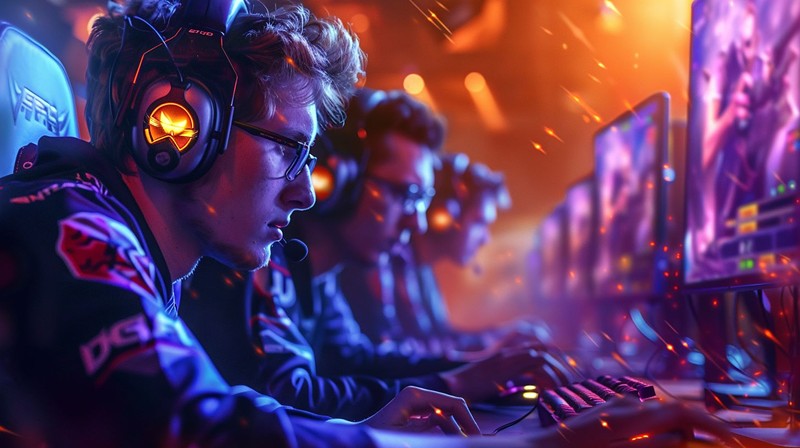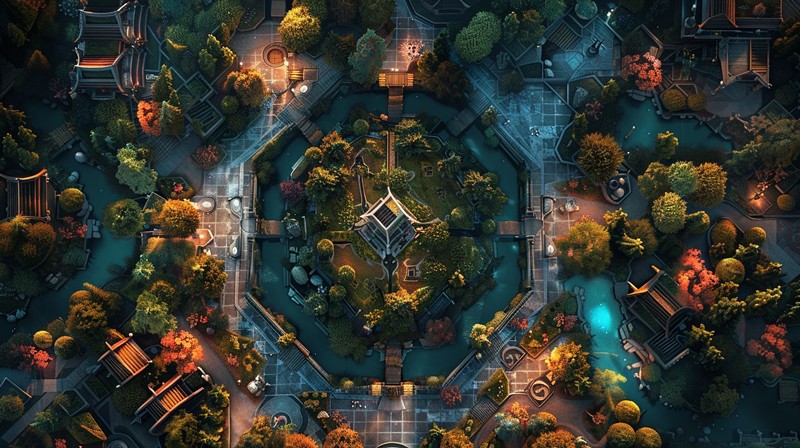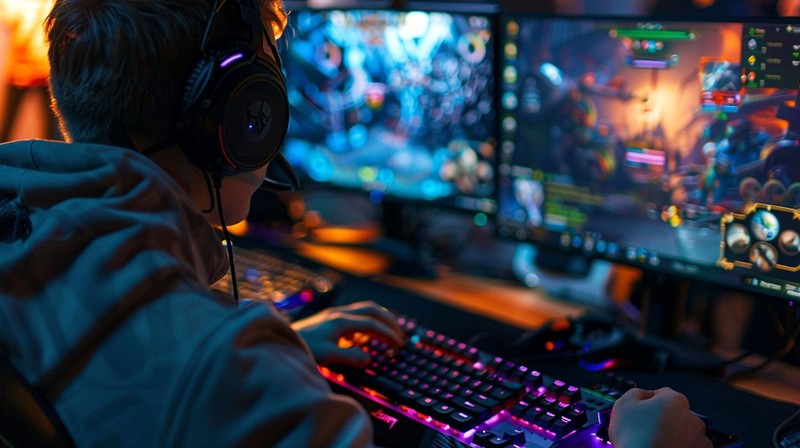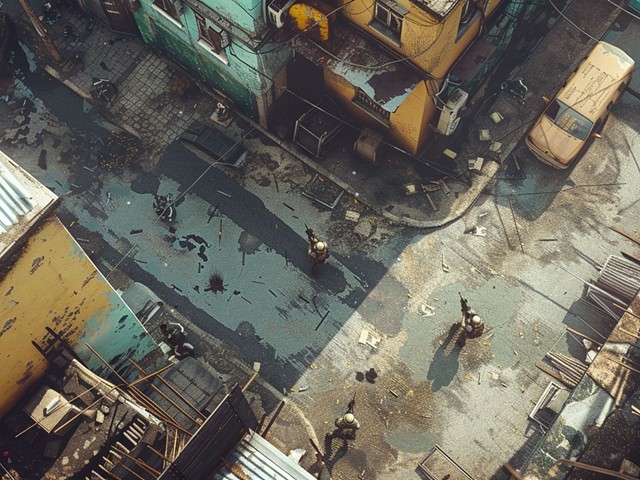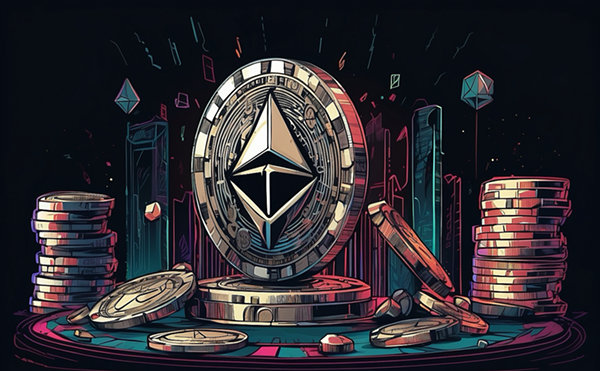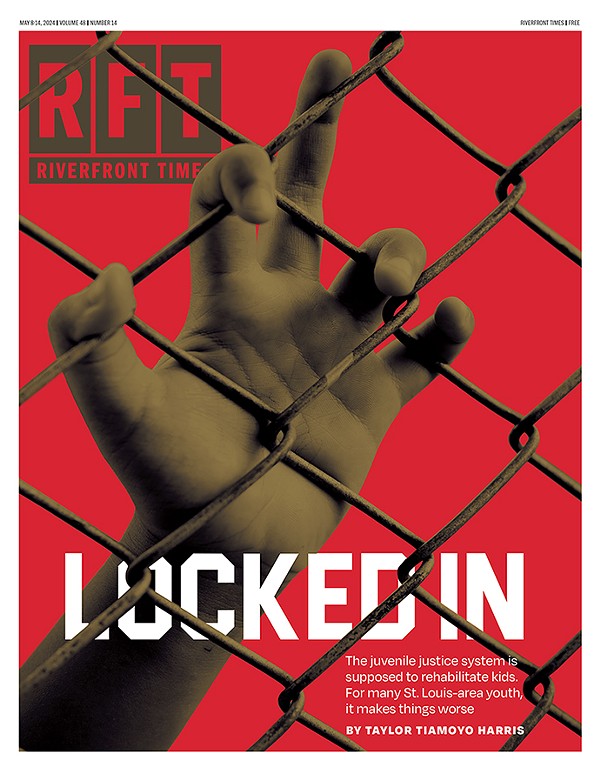Dota 2, a popular MOBA game, introduces players to intricate gameplay complexities. The game encompasses various modes and strategic elements to ensure an engaging experience for all players.
What is Dota 2?
Dota 2 is a popular MOBA (multiplayer online battle arena) game developed by Valve Corporation, captivating players with its deep strategy and fast-paced action. The game features over 120 playable characters, each offering unique abilities and playing styles to choose from.
These heroes are categorized into three types based on their primary attribute: Strength, Intelligence, or Agility. This classification plays a significant role in determining the hero's role in battles and how they contribute to their team's success.
Players compete in two teams of five with the ultimate goal of destroying the opposing team's Ancient, which is located inside their base. The battlefield consists of three lanes connecting these bases, guarded by towers that defend against enemy attacks.
Strategy becomes key as players navigate through lanes, accumulate gold and experience by killing creeps during the laning phase, and execute ganks to gain advantages over opponents.
Dota 2 game modes
Now that you understand what Dota 2 is, let’s explore the variety of game modes it offers. Players can choose from multiple modes, each providing a unique way to experience the game.
- All Pick: This is the most common mode for new and experienced players alike. Here, everyone selects their hero from the full roster available in Dota 2. It's perfect for those who want to practice with specific heroes or experiment with different strategies.
- Turbo Mode: Aimed at delivering faster matches, Turbo mode increases gold and XP gain throughout the game. It's ideal for players looking for quick games or wanting to try out crazy builds without committing to a long match.
- Ranked Matches: For those seeking a competitive edge, ranked matches allow players to compete against others of similar skill levels for a chance to increase their rank within the Dota 2 community.
- Unranked Matches: Similar to ranked matches but without the pressure of affecting your rank, unranked matches are great for practicing new heroes or strategies in a less stressful environment.
- Bot Matches: Players can go up against computer-controlled opponents either alone or with friends. Bot matches offer a good practice ground for beginners to get used to game mechanics without the stress of real opponents.
- New Player Mode: Specifically designed for newcomers, this mode simplifies aspects of Dota 2 and pairs new players together so they can learn at their own pace without feeling overwhelmed by more experienced competitors.
- Custom Lobbies: For those wanting more control over their Dota 2 experience, custom lobbies allow players to create private games with specific rulesets or mods, making it an excellent choice for playing with friends or hosting mini-tournaments.
Each mode brings something different to the table, allowing players to find their niche within Dota 2 based on what they enjoy most about playing MOBAs like League of Legends or classic Warcraft III maps that inspired Defence of the Ancients (DotA). Whether you're looking to climb the ranks in competitive play or just have fun exploring different heroes and item combinations in Turbo mode, there’s something in Dota 2 for every type of player.
Getting to Know the Dota 2 Map
Explore the Dota 2 map to understand its intricacies – from the strategic significance of offlane and safelane to mastering vision, runes, and the day-and-night cycle. Discover the nuances of invisibility as you navigate through this ever-evolving terrain.
Offlane and safelane
In Dota 2, the map splits into two main lanes: the offlane and safelane. Each lane has a unique role in the strategy of the game. The safelane serves as a crucial area for players to safely earn gold and experience by last-hitting creeps.
Players often choose this lane to farm efficiently, focusing on building their net worth early in the match.
The offlane presents a different challenge, positioned directly opposite the safelane and closer to enemy territory. Here, players find themselves under constant threat from opponents seeking to disrupt their progress.
Success in the offlane requires defensive play and resilience, as controlling this tougher position can significantly impact team dynamics and control over the map's strategic locations.
Vision
Moving from understanding the lanes, we delve into the crucial aspect of vision in Dota 2. Gaining sight over the map is key for making strategic decisions and discovering when to ambush enemies or avoid potential threats.
Players use wards, a special item that lights up parts of the map, to keep an eye on movements around Roshan’s pit or to monitor rune spawns. These illuminated areas can drastically change the outcome of battles by providing valuable information.
Heroes play a significant role in controlling vision with their unique abilities, allowing teams to spot opponents hiding on high ground or concealed in shadows. Controlling these vantage points ensures an upper hand during clashes and secures objectives like the Aegis of the Immortal from Roshan more safely.
Effective management of vision not only safeguards your team but also creates opportunities for ganking unsuspecting opponents, thereby tilting game momentum in your favor.
Runes
Bounty runes provide extra gold and an opportunity for team skirmishes before the creeps meet. Placed at four locations on the map, bounty runes are highly contested resources that offer a significant advantage to the team that secures them.
Capturing these runes not only provides 40-150 gold but also gives experience points to nearby allies, making it crucial for early-game dominance. Moreover, controlling bounty runes can disrupt enemy plans and create favorable conditions for your team's laning phase.
Known for turning the tides of battle, securing bounty runes requires strategic positioning and coordination among teammates. Understanding their importance and timing their capture can grant your team a valuable edge as you progress through different phases of the game.
Day and night cycle
The day and night cycle in Dota 2 significantly impacts gameplay. Heroes have an expanded vision range during the day, providing better visibility across the map. Conversely, reduced vision at night makes it crucial for players to anticipate enemy movements and execute strategic plans effectively.
Understanding this cycle is vital for optimizing farming efficiency, ensuring safety when pushing lanes, and seizing objectives.
Certain hero abilities and items are influenced by the day and night cycle, emphasizing the need for players to stay vigilant of their surroundings as darkness falls. High ground vision advantage becomes even more critical during nighttime when overall visibility decreases.
Invisibility
Invisibility in Dota 2 is a crucial gameplay mechanic that allows heroes or units to become unseen by enemies. This can be achieved through hero abilities, certain items, or runes found on the map.
Invisibility provides a tactical advantage for initiating surprise attacks, escaping enemy engagements, and setting up ganks. Countermeasures such as wards, dust, or gem of true sight can reveal invisible units.
Heroes with invisibility abilities must use them cautiously to maximize their strategic effectiveness while being mindful of enemy detection.
The Importance of Dota 2 Creeps
Understanding the roles and functions of Dota 2 creeps is essential for mastering gameplay. Creeps play a vital role in controlling lanes and securing objectives throughout the match.
Lane creeps
Lane creeps in Dota 2 play a pivotal role in the game's dynamics. They spawn every 30 seconds and provide gold and experience when eliminated. Each wave consists of melee and ranged lane creeps, with their strength directly impacting gameplay.
The laning phase revolves around securing or denying last-hits on these creeps, influencing early-game strategies for each player. Additionally, the destruction of barracks weakens the creeps, redirecting emphasis onto other objectives within the match.
The strategic importance of lane creeps cannot be overstated as they are crucial to gaining resources for heroes' development while adding complexity to map control and overall gameplay tactics.
Neutral creeps
Transitioning from lane creeps, let's delve into the world of neutral creeps in Dota 2. Neutral creeps serve as an additional source of gold and experience for players and understanding their behaviors and mechanics is crucial.
Neutral creep camps spawn across the jungle areas of the map at specific intervals. These include various types such as Centaurs, Hellbears, Satyrs, and more. Each type possesses unique abilities and strengths that players should be mindful of when engaging with them.
By stacking neutral camps - luring them out of their spawn area to create a new set while still allowing the old one to exist – players can increase farming efficiency, ensuring they make full use of these resources for their benefit on the battlefield.
Roshan
Roshan, a formidable boss in Dota 2, plays a crucial role in the game. When killed, Roshan drops items, including the Aegis of Immortality. This makes slaying Roshan a strategic objective that can provide a significant advantage to the team who successfully defeats him.
Understanding Dota 2 Heroes and Roles
Dota 2 features over 120 playable heroes, each with their own distinctive set of stats and skills. As players select a hero, they must decide between Strength, Intelligence, or Agility heroes to match their preferred playstyle.
It's essential to comprehend the unique abilities and attributes of each hero to make strategic decisions during gameplay.
Roles in Dota 2 define how a hero contributes to the team. The five main roles are Carry, Support, Midlaner, Offlaner, and Jungler. Each role has its specific responsibilities and impacts on the game.
Understanding these roles is crucial for effective teamwork and maximizing the team's overall potential.
Understanding Dota 2 heroes and roles is fundamental for navigating complex strategies in this ever-evolving game world - not only does it enhance gameplay expertise but also underpins successful team synergy.
The Phases of a Dota 2 Match
In a Dota 2 match, the game progresses through distinct phases including early, mid, and late game. To learn more about these crucial stages in the game, continue reading our in-depth guide.
Early Game
The early game in Dota 2, known as the laning phase, is where players focus on securing last-hits on creeps in their designated lanes. This phase is crucial for acquiring gold and experience to strengthen their heroes for the mid and late game.
It's a time when strategic positioning and efficient use of abilities are key to gaining an advantage over opponents. Neutral creeps also play a vital role during this phase, spawning at 01:00 and offering various types of creeps in each camp, including powerful ancient creeps that can provide significant benefits if defeated.
During the early game, controlling vision around the map becomes pivotal to monitor enemy movements and secure objectives. Additionally, understanding power spikes of different heroes is essential for making impactful plays during this stage of the match.
Mid Game
During the mid game in Dota 2, acquiring Bounty runes can grant extra gold and provide an opportunity for team skirmishes before the creeps meet. This phase is critical for securing map control via warding, exploiting power spikes of heroes, and coordinating team fights to claim objectives.
Efficiently utilizing resources and controlling key areas become essential during this stage of the match.
Players often strategize to secure neutral items dropped by neutral creeps while maintaining pressure on enemy towers and defending their own. As the game progresses, skilled players meticulously adapt to ever-changing dynamics to gain an advantage over their opponents.
Late Game
In the late game of Dota 2, teams may prioritize securing objectives such as Roshan or pushing high ground to gain a strategic advantage. The "five man push" strategy becomes crucial, as well as split-pushing to apply pressure across multiple lanes simultaneously.
Additionally, itemization is paramount at this stage, with players often aiming for high-impact items that can turn team fights in their favor.
Team coordination and map control are key factors during the late game phase. Teams need to maintain vision around crucial areas while being mindful of enemy movements and potential ganks.
An Overview of Dota 2 Items
Dota 2 Items are crucial for enhancing your hero’s abilities and giving you an edge in the game. Understanding the types of items available and how they can be used strategically is key to mastering the game.
The Secret Shop
The Secret Shop in Dota 2 offers more powerful and unique items not available in the Base Shop. Accessing the Secret Shop can greatly impact the outcome of matches for players. It is a high-risk area where players must be cautious when visiting, but it's crucial for purchasing specific items essential for their strategy.
This part of the game underpins strategic decision-making and often determines which team gains an advantage.
The Secret Shop provides access to powerful items that are not available in the Base Shop, making it a key destination during matches. Players who meticulously utilize this resource gain an edge over opponents and have a tailored approach to acquiring essential gear for their heroes.
Neutral items
After understanding the mechanics of The Secret Shop, it is important to delve into the realm of neutral items, which play a crucial role in Dota 2 gameplay. Here are some key facts and tips regarding neutral items:
- Neutral items can significantly impact the outcome of a match and should be carefully utilized by both teams.
- These items can provide bonuses to stats, unique abilities, and increased movement speed to the hero who wields them.
- Neutral items also include tiered options that become available at specific game timer milestones as the match progresses.
- The availability of these items should influence team strategy and tactics throughout the game.
- Securing and effectively utilizing neutral items can be a game - changer for teams, potentially tipping the balance in their favor.
- Successfully incorporating neutral items into gameplay may underpin a team's success or failure throughout various phases of the match.
Tips for Starting to Play Dota 2
Start by selecting a hero that aligns with your playstyle and team composition. Learn the importance of communication and teamwork to effectively coordinate with your team in achieving objectives.
The goal
To customize camera movement, abilities, and items for optimal gameplay through keybinding in the settings is essential when playing Dota 2. Controlling units and heroes while understanding the strategic focus and complexity of the game underpins a successful gaming experience.
Moreover, focusing on all pick or bot matches helps new players comprehend the basics of the game effectively.
Understanding the strategic focus of Dota 2 will aid in customizing your gameplay for an enjoyable experience. Keybinding settings for camera movement and abilities are crucial to optimize performance on this ever-evolving gaming platform.
The base
The base is the main structure of each team's defense and serves as the primary objective for both teams. Protecting your base is crucial as it allows you to maintain map control, defend against enemy pushes, and launch counter-attacks.
The destruction of the enemy's base marks the end of the game, securing victory for your team. Understanding how to protect your base while strategically pushing towards your opponent's is essential for success in Dota 2.
The base houses a variety of structures such as barracks, towers, and the Ancient that need defending or attacking throughout different stages of the game. It also serves as a safe haven where heroes can heal up and stock up on items before venturing back out into battle.
The heroes
Dota 2 features a diverse roster of heroes, each with unique abilities and playstyles. Understanding the roles is crucial, as it affects your team's overall strategy. Strength, Intelligence, or Agility? Each hero belongs to one of these categories, influencing their primary attributes and role on the battlefield.
Whether you're drawn to dishing out damage in quick bursts or supporting allies with healing spells, finding the right hero that suits your playstyle can significantly impact your experience.
When choosing a hero in Dota 2, consider whether you want to take on the role of a carry or support. Carries are responsible for dealing heavy damage late game and securing victory for their team.
Strength, Intelligence, or Agility?
Strength, Intelligence, or Agility? When selecting a hero in Dota 2, it's essential to understand the differences between these three attributes. Strength heroes are known for their durability and crowd control abilities, making them ideal frontline tanks.
On the other hand, Intelligence heroes excel in spellcasting and providing valuable support to the team through crowd control. Finally, Agility heroes are revered for their high damage output and mobility, often serving as primary physical damage dealers during matches.
Understanding these attributes is crucial in forming a balanced team composition that can effectively counter the opponent's lineup and secure victory on the battlefield.
Carry or Support?
Understanding the roles of carry and support is essential in Dota 2. The carry's primary objective is to farm gold and experience to become powerful in the late game, dealing significant damage to enemy heroes.
On the other hand, supports focus on enabling their teammates by providing vision, crowd control, and sustain during team fights. They also help secure the carry's farm by zoning out enemies from their lane.
In a well-balanced team composition, carries typically rely on supports for protection and assistance during the early stages of the game.
The decision between playing as a carry or support involves considering your playstyle preferences and understanding each role's responsibilities. While carrying requires exceptional farming skills and strong decision-making in allocating resources, supporting demands effective map awareness and selfless dedication to helping teammates thrive.
The gameplay
Dota 2 gameplay involves intense strategic planning and execution across the radiant and dire factions. Players need to control their chosen hero effectively, using special abilities and items to outmaneuver opponents.
The focus is on acquiring gold, experience levels, and power-ups while navigating the intricacies of the game's ever-evolving map. Each match presents an opportunity for players to showcase their skills in a fast-paced, action-packed environment.
Understanding each hero's role in a team is crucial as players aim to dominate lanes, secure objectives like Bounty runes, and deny creeps. Additionally, adapting strategies based on early, mid-game, or late-game phases can determine the outcome of matches.
Laning
The laning phase in Dota 2 demands focused attention on last-hitting creeps, especially for non-support roles. Safe lanes provide the opportunity to patiently wait for low-health creeps and secure last-hits, crucial for earning gold and experience to build net worth in Dota 2.
Ganking
When playing Dota 2, it's important to understand the tactic of ganking. Ganking involves a player leaving their lane to sneak up on an enemy in another lane. This move can catch opponents off guard and create opportunities for securing objectives or eliminating enemies.
In Dota 2, ganking is a crucial strategy that can shift the momentum of the game by creating favorable team skirmishes and gaining control over vital Bounty runes for extra gold.
The strategic element of ganking relies on players' awareness of their surroundings and coordination with teammates to effectively execute surprise attacks. Successful ganks not only disrupt opponents but also contribute to achieving key objectives essential for victory in Dota 2 matches.
Jungling
Transitioning from ganking to jungling, this part of Dota 2 gameplay involves venturing into the jungle to secure extra resources for your team. Jungling is a crucial role that contributes to the overall success of your team by acquiring gold and experience from neutral creeps.
As a jungler, you should aim to efficiently clear camps and striking a balance between farming and aiding teammates in skirmishes when necessary.
Jungling presents an opportunity for additional gold through Bounty runes, creating momentum for your team with increased financial resources. It's vital for aspiring players to understand the map layout and timing of camps in order to optimize their effectiveness as junglers.
Mid- and late-game
During the mid-game in Dota 2, heroes transition from their lanes to focus on objectives and team fights. This phase involves securing map control and vision, enhancing items and abilities, and adapting strategies based on opponents' movements.
With Roshan's potential contestation at this stage, capturing him can be a game changer. The late-game shifts towards intense team battles centering around high-stakes objectives like barracks or the Ancient, requiring precise coordination and decision-making.
As teams progress into the late-game in Dota 2, takedowns become more critical as respawn timers increase significantly. Each skirmish holds immense importance as it can determine the flow of the rest of the match.
For more information email [email protected]
